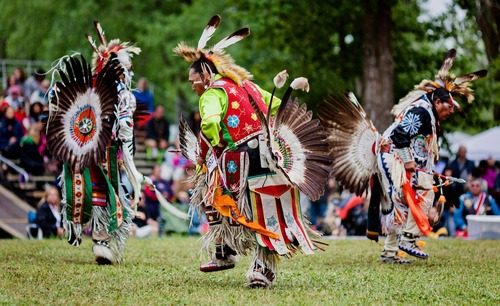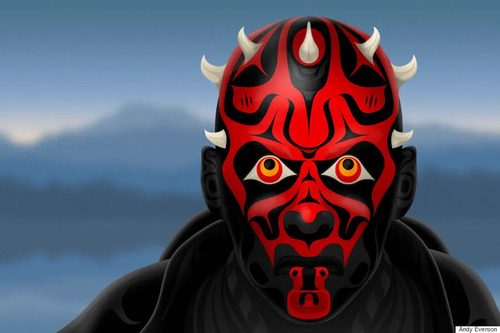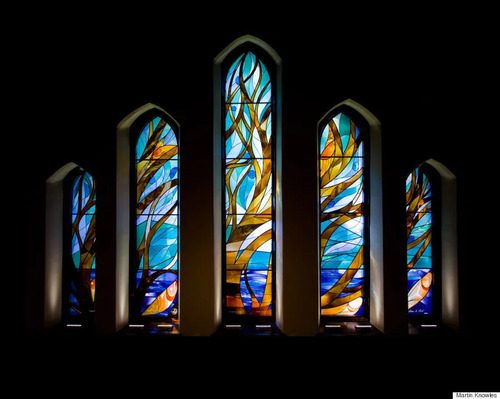Twenty-first-century Canada is a melting pot of immigrant cultures and nationalities – Filipino, Chinese, African, European, and so on. But Canada has always been home to an aboriginal group of people, the earliest being the First Nations and the Inuit, then much later, the Metis. Together, they are called the Indigenous people of Canada making up 5% of the population (1.8 million people).
The name Canada comes from Kanata (village) which was a word from the language of the St. Lawrence Iroquians – an indigenous group of people that existed until the 16th century. Ottawa, the country’s capital, got its name from the Algonquin language. It means ‘to trade’ (adawe).
Fur trade between the indigenous people, and European fishermen in the 16th century was one of the earliest points of contact between the two cultures. Skins of animals were exchanged for textile and iron-based products like knives and pots. This economic activity led to further relations between the trading people that ultimately led to the formation of Canada.
Metis
The Metis are the products of marriages between the early European settlers (mostly French), and First Nations tribes like Algonquin, Cree and Ojibway, meaning they began to exist as a distinct group of people in the fifteenth or sixteenth centuries after interactions began between the groups.
They speak Michif, Metis French, and Bungi. The Metis are local to five of Canada’s provinces – Alberta, British Columbia, Manitoba, Ontario, and Saskatchewan.
Inuit
The Inuit are a more ancient cultural group, believed to have emerged as far back as 1000 CE. Records show that they are descendants of the Thule Culture predominant around Alaska, from where they fanned out to the rest of the Arctic Region.
Inuktitut is the most spoken language of the Inuit. It consists of three dialects. Inuvialuktun, and Inuinnaqtun are the other spoken languages of the Inuit.
Nunavut – ‘Our Land’ in Inuktitut – is predominantly populated and administered by the Inuit.
First Nations
The Blackfoot, Sarcee, Algonquin, Iroquois, and Cree are some of the indigenous groups that make up Canada’s First Nations. There are 630 First Nations across Canada’s provinces and territories excluding Nunavut which is predominantly Inuit in population and administration.
There is no single language attributed to the First Nations because there are so many groups wrapped up in one blanket term. Members of First Nations also like to identify themselves by their distinct tribes: Esquimalt, Sheshatshiu Innu, Kebaowek and so on.
The National Indigenous History Month

Before the National Indigenous History Month, there was the National Indigenous People’s Day (June 21) proclaimed in 1996 by Romeo LeBlanc, the then governor-general of Canada.
Thereafter, in 2009, the Canadian House of Commons unanimously declared June as National Indigenous History Month. The time is set aside to acknowledge the first people in Canada, and celebrate their culture, achievements, and contributions to the development of the country.
June 21 was perfect because it is the day when indigenous people celebrated their heritage. It is also the first day of summer, and the longest day of the year.
A significant theme of this month is about acknowledging the dark past experienced by Canada’s indigenous people. One of these was the era of the Indian Residential School system for which the federal government under prime minister Stephen Harper offered a full apology in 2008.
Noteworthy Indigenous Personalities
Dr. Nel Wieman
A Member of Little Grand Rapids First Nation, she is Canada’s first female indigenous psychiatrist.
Sheila Watt-Clouter
She was nominatedCloutierfor the Nobel peace prize in 2007 for her work on Climate change and the environment.
Senator Lillian Eva Dyck
She is Canada’s first First Nations woman to obtain her PhD. in the sciences. She is also the first female First Nations senator in Canada.
William Ronald Reid
Bill Reid was a Canadian artist. Two of his works are on the twenty-dollar bill. He was a First Nations member of the Haida tribe.
How to participate in sustaining the heritage of Indigenous people

There are several ways to participate in the National Indigenous History Month:
Attend community events: the Calgary Library, YMCA, and other similar organizations hold annual enlightenment events for members of the public.
Educate yourself: You should endeavour to educate yourself about such a significant aspect of Canada. You can do this by reading up online, in libraries or getting books on the subject matter.
Follow content creators: It doesn’t matter which social media channel you are active on, there are content creators of indigenous nations descent whose productions emphasize indigenous culture. You could start with James Jones @notoriouscree on Instagram. Movies, music, and other artistic works are media productions that can give you insight into native culture.

appreciation to these great first inhabitants of the land we
appreciation to these great first inhabitants of the land we
Final Thoughts
As we wind down this year’s National Indigenous History Month, ABM College wishes to encourage you to participate, if you haven’t already. As stated in the previous section, there are several ways of getting involved. Let’s show our appreciation to these great first inhabitants of the land we all call home.
